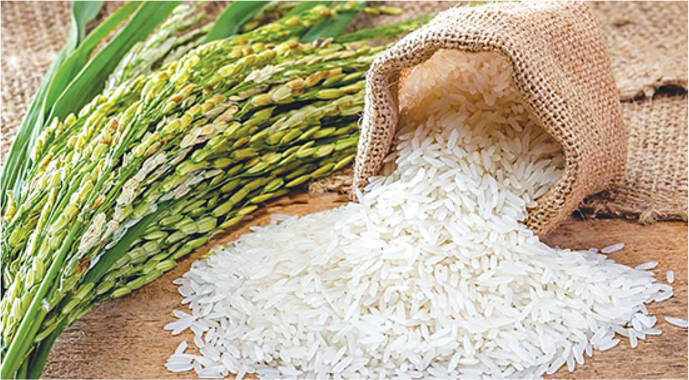
Department of Food and Public Distribution is working tirelessly to ensure that 'Rice Fortification' is implemented to combat malnutrition, anaemia, and micronutrient deficiencies. The department's storage and research division also oversees finished product quality standards from procurement to distribution via various social security programmes, as well as self-declared quality certification from the end of FRK (Fortified Rice Kernels) manufacturers/millers, etc.
A Standard Operating Procedure (SOP) has also been formulated and issued by the Department in March 2022 to ensure the smooth implementation of the entire program/to maintain the desired quality standards under the domestic supply chain.
The SOP clearly narrates the level-wise role and responsibilities of various stakeholders involved in the ambitious scheme, from FRK manufacturing to its distribution to eligible beneficiaries, in order to maintain the desired quality standards of Fortified Rice Kernels and Fortified Rice.
While the Department defines the roles and responsibilities of various stakeholders, the Food Safety and Standards Authority of India (FSSAI) also plays an important role in the overall programme. Initially, the FSSAI notified the standards for fortified foods, including rice, through the Food Safety Standards (Fortification of Foods) Regulation, 2018, the Food Safety and Standards (Food Products Standards and Food Additives) Regulations, 2011, and other regulations.
FSSAI accredited/licensed FRK (Fortified Rice Kernels) manufacturers, developed various quality certification standards/guidelines for finished product packaging and stencilling, sampling guidelines, technical handout on rice fortification, and so on for various operational accomplishments. FSSAI is also mapping NABL-accredited labs in each state that can test the various quality parameters of FRK/FR.
The FSSAI's Food Safety Officer also performs promotional and regularity duties (FSO). These officers take random samples from the mill and from low-cost shops to ensure the quality of fortified rice (enough to cover all of the shops and mills under his/her supervision in a quarter). Food Fortification Resource Centre (FFRC), a unit of FSSAI that serves as a resource hub for fortification, will provide any type of assistance to Food Business Operators (FBO), Millers, States, FCI, etc./facilitate training and capacity building (FBO's, rice millers, FPS owners, FSO's, etc.) and monitor and evaluate the programme with assistance from development partners.
FSSAI is a resource centre that offers information and inputs on standards and food safety, technology and processes, premix and equipment procurement and manufacturing, quality assurance and quality control for fortified rice.
Rice fortification, which involves the addition of micronutrients such as iron, folic acid, and vitamin B12, is an effective, preventive, and cost-effective complementary strategy for addressing anaemia. Several studies from both the global and Indian contexts, including pilot projects, have demonstrated the efficacy of fortified rice as an effective intervention to address anaemia.
In an ambitious effort to combat the serious problem of anaemia caused by malnutrition, Hon'ble Prime Minister Shri Narendra Modi Ji announced on the 75th Independence Day (15th August 2021) that rice fortification would be mandated in all social safety net schemes by 2024.
It should be noted that dietary diversification and a greater reliance on fruits and vegetables are additional sources of micronutrients that are not always affordable to a large portion of the population. The Centre has been working to develop various awareness programmes about the benefits of eating fortified rice in various parts of the country. State governments have been advised to educate their citizens about the myths and misconceptions about fortified rice.
Since the launch of the Centrally Sponsored Pilot Scheme for distribution of fortified rice through PDS, multiple states across the country have been successfully implementing fortified rice distribution through the public distribution system, with no major challenges. Moreover, due to a lack of awareness, however, fortified rice and its benefits are not understood properly.
In terms of Food Safety and Standards Authority of India (FSSAI) regulations on packaging material, procuring agencies such as Food Corporation of India (FCI)/State Agencies, as the case may be, strictly adhere to FSSAI guidelines, and bags are imprinted with the +F logo and the message "People with Thalassemia may take fortified rice under medical supervision."
Fortification is the process of adding essential micronutrients to food, such as vitamins and minerals (including trace elements), in order to improve nutritional quality and provide a public health benefit with minimal risk to health.
According to the Copenhagen Consensus Statement, 2008, food fortification is one of the top three priorities for developing countries. In fact, fortified foods are not new to India. Consumption of Iodized Salt, another type of fortified food, has reduced the prevalence of Iodine Deficiency Disorders and diseases such as Goitre in India. Rice fortification is also a viable preventive and complementary intervention for addressing anaemia in a timely manner.
(Source: PIB)
















